D850 DSLR Moon, Jupiter, Saturn, Mars
Posted: 25 September 2020
|
Open: Thursday, 24 September 2020, 1806 MST Temperature: 86°F |
Session: 1521 Conditions: Clear |
Equipment:
12" f/8 LX600 w/StarLock
2" 24mm UWA eyepiece
2" 4X Powermate
Camera:
D850 DSLR
1810 MST: LX600 ON, StarLock OFF, High Precision OFF.
I set up the D850 DSLR with a 150-600mm lens on the observatory patio. It would be used for photographing the Moon, Jupiter, Saturn, and Mars.
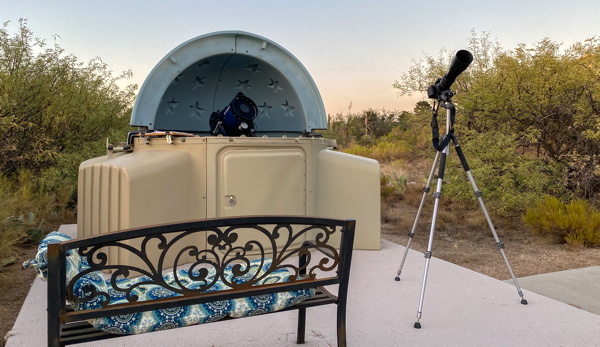
1816 MST: viewed the Moon, 102X.
1819 MST: sunset.
Relaxed on the observatory patio bench for awhile.
1846 MST: began photographing Saturn, Jupiter, and the Moon with the D850 DSLR.
f/5, 1/60sec, ISO 400, FL 150mm

f/6, 1/320sec, ISO 400, FL 400mm
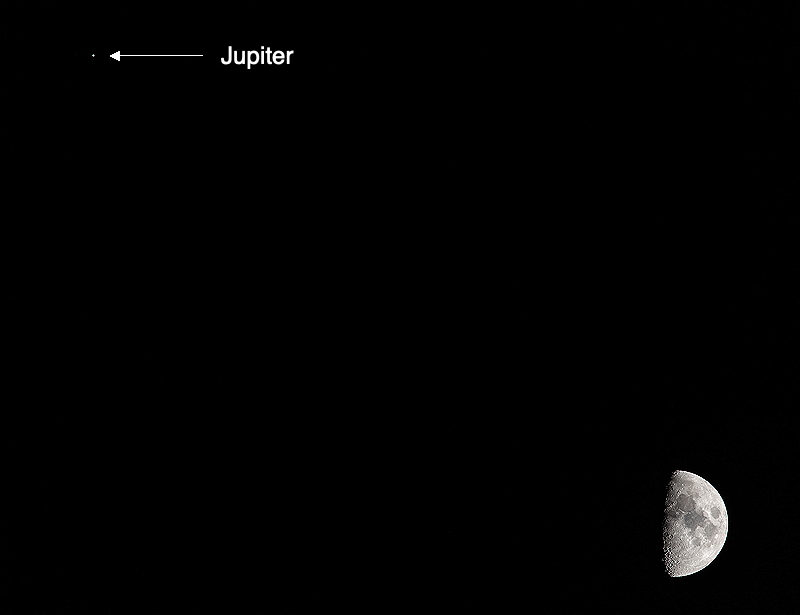
I also took some photographs at focal length 600mm to create a montage once I had photographed Mars later in the session.
1924 MST: back inside the observatory. Viewed the Moon, 102X and 406X. Viewed Jupiter, the four Galilean Moons, and the Great Red Spot, 406X. Viewed Saturn and 4 moons, 406X.
I mounted the D850 DSLR at prime focus and then prime focus + 4X Powermate for these images. The prime focus image was at 1/250sec, ISO 400, and the 4X images were at 1/160, ISO 3200.
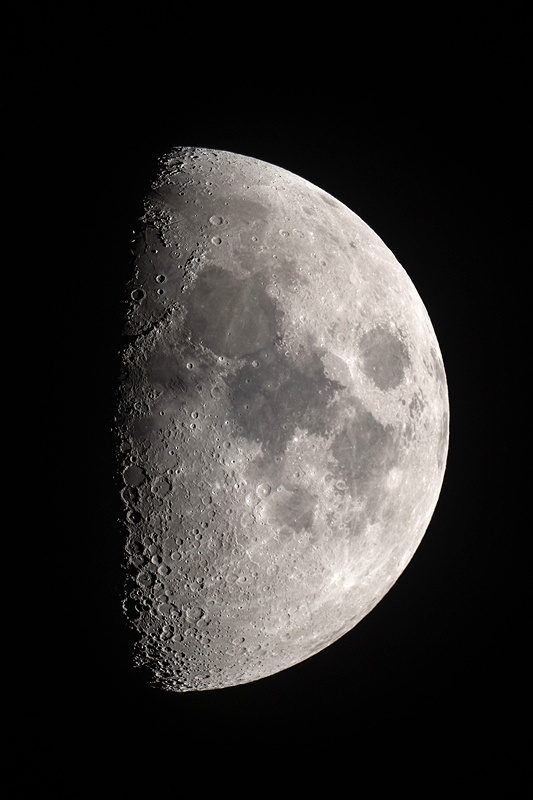
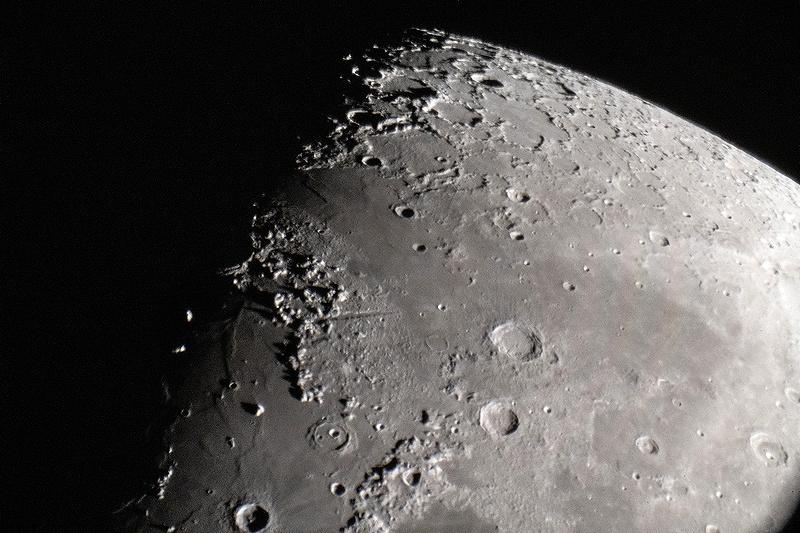
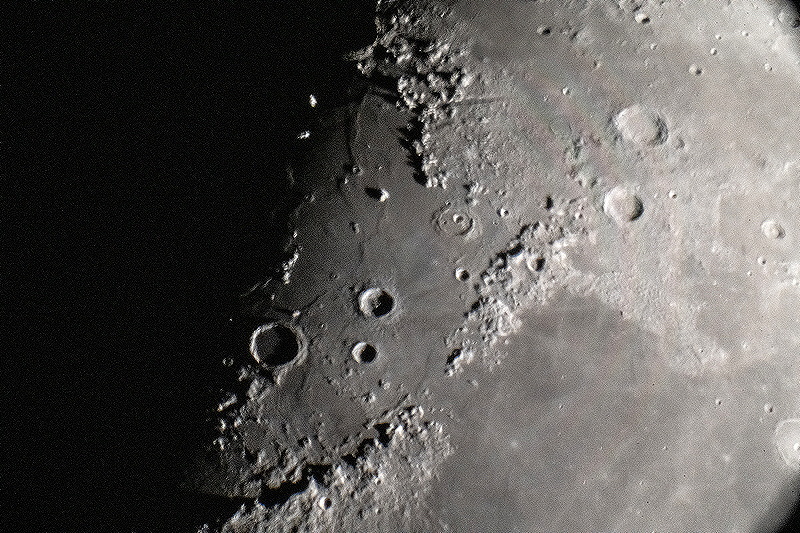
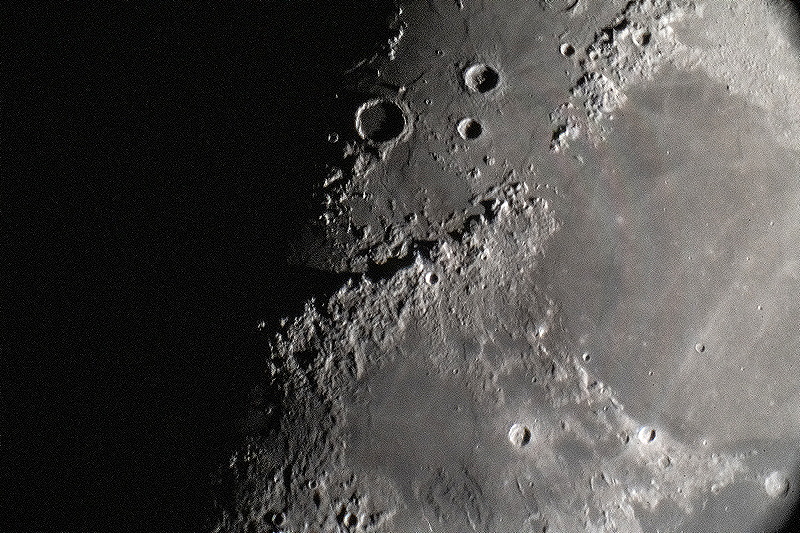
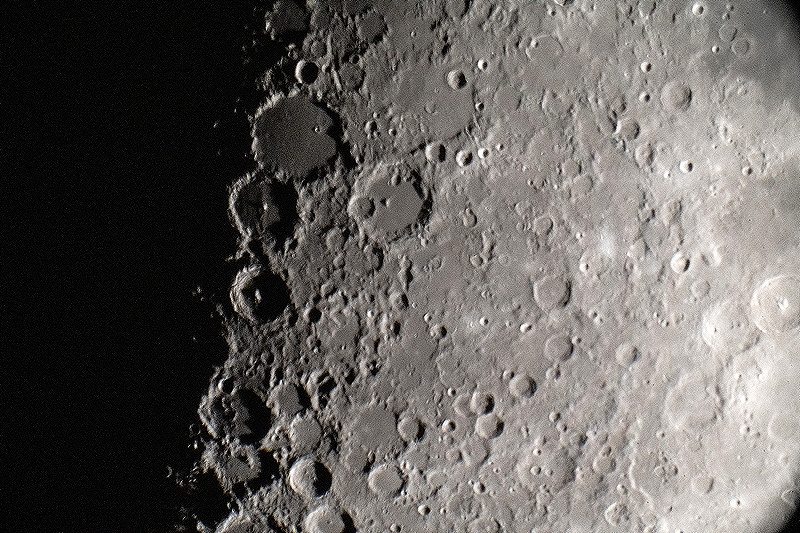
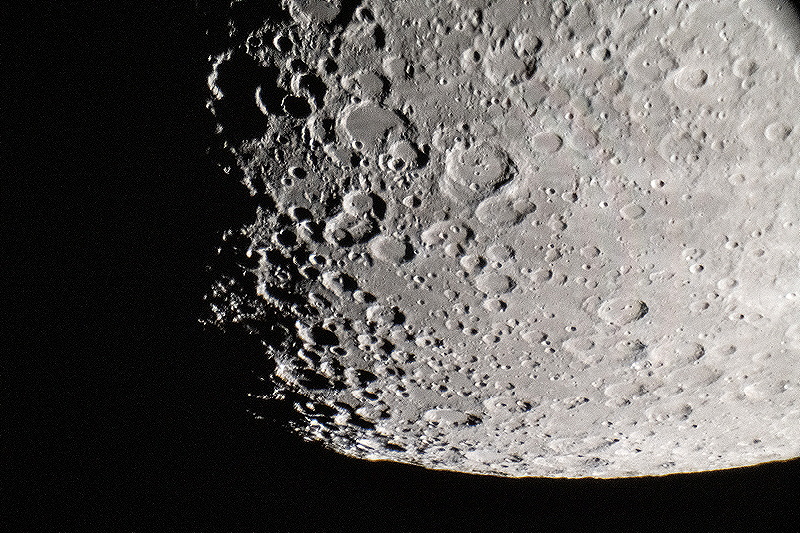
I then photographed Jupiter and Saturn at prime focus + 4X Powermate using the D850 DSLR. These are single frame images (cropped).
Jupiter (1/160sec, ISO 3200)
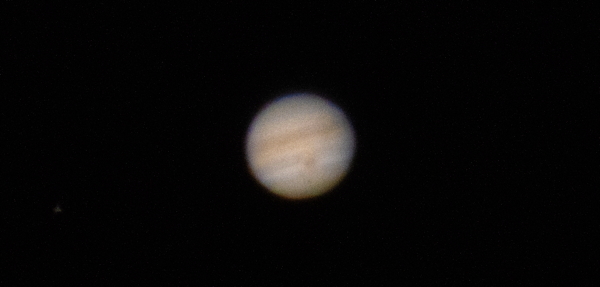
Saturn (1/60sec, ISO 500)

2011 MST: back to relaxing on the patio bench and enjoying the night sky.
2016 MST: bright Mars was rising over the hill to the east.
Using 12x50 binoculars I viewed the following: M31 (Andromeda Galaxy), Double Cluster, Moon, Mars, M13 (Great Globular Cluster in Hercules), and M33 (Triangulum Galaxy).
2130 MST: back inside the observatory. Began imaging Mars at prime focus + 4X Powermate with the D850 DSLR. Seeing was not ideal but the images (cropped) show the South Polar Cap and some dark surface features.
Mars (1/320sec, ISO 2000)

Mars (stack of 1215 video frames, 1/320sec, ISO 1600)
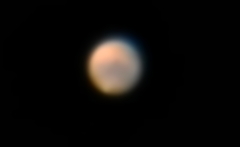
I then photographed Mars at focal length 600mm. This is a montage of the planets and the Moon at the same scale.

Click or tap on image for larger version
2207 MST: Viewed Mars, 406X and 102X.
2211 MST: LX600 OFF.
This night was the 15th anniversary of my 8th visit to Oracle Observatory in 2005.
|
Close: Thursday, 24 September 2020, 2222 MST Temperature: 77°F |
Session Length: 4h 16m Conditions: Clear |
Comments are welcome using Email. Twitter users can use the button below to tweet this report to their followers. Thanks.
Cassiopeia Observatory Home Page
Copyright ©2020 Michael L. Weasner / mweasner@me.com
URL = http://www.weasner.com/co/Reports/2020/09/25/index.html
